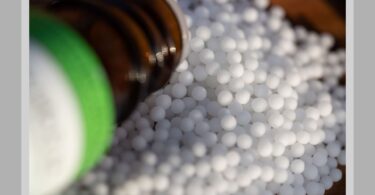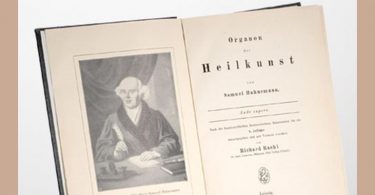Up to the year 1821, Hahnemann had made his triturations in porcelain mortars with sugar of milk, but the capsules for the patient he filled with pulverized oyster shell, adding to it the necessary amount of the trituration. At that time pure white milk sugar was an expensive and rare article, for its chief source of supply, Switzerland, made and exported only small amounts. It became the first care of our people at Leipsic to secure it in larger amounts and of better quality, for, like Hahnemann, they were obliged to prepare all their medicines. The porcelain mortars used were soon replaced by better ones of marble.
About this time Hofrath Henecke, of Gotha, the editor of the Reichanzeiger, and a good friend of Hahnemann, suggested Homoeopathic family medicine cases. At first there was also a scarcity of proper glassware for the very tiny vials. Goose quills had been commonly used in private practice to contain the medicines. Bohemia soon supplied its glass. From the globules all starch was removed to prevent discoloration and crumbling, and they were made of different sizes. As early as 1828, fine pocket cases were for sale, chiefly made by Lappe, an apothecary of Neudietendorf, of whom Hahnemann was in the habit of ordering several remedies.
Christian Ernest Otto, of Roetha, near Leipsic. was the first toestablish a regular Homoeopathic pharmacy. M. Korsakoff, a Russian gentleman, addressed a letter to Hahnemann in which he recommends the use of little tubes or vials, for holding the Homoeopathic globules. He suggests that the pills should be placed in the vial and two or three drops of the medicinal dilution be poured over them and that they then be shaken thoroughly. Hahnemann in an answer published in the same journal, approves of this method, but advises that the pills be not shaken, but stirred with a glass pin until dried, adding that the evaporation will not affect the medicinal powers. This answer can also be found in the Lesser Writings. Dudgeon says: “Korsakoff was the real original inventor of the high potencies.” Hahnemann said that his experiments were of great value as illustrating the extreme divisibility to which the Homoeopathic medicines could be brought, but advised some limit. In a letter to Dr. Schreeter, dated September 13, 1829, he says “Theremust be some limit to the thing, it cannot go on to infinity. By laying it down as a rule that all Homoeopathic medicines be diluted and potentized up to thirty, we have a uniform mode of procedure in the treatment of all Homoeopathists, and when they describe a cure we can repeat it as they do, and we operate with the same tools.”
Dudgeon says that the introduction of sugar globules into Homoeopathic practice by Hahnemann dates from about the year 1813, and refers to a note made by Hahnemann to paragraph 288 of the fifth edition of the Organon, viz: “A globule impregnated with the thirtieth potentized dilution and then dried, retains for this purpose all its power undiminished for at least eighteenor twenty years (my experience extends that length of time,) even though the vial beopened a thousand times during that period, if it be but protected from the heat andsun’s light.“
Excerpted from: The Life of Hahnemann –Thomas Lindsley Bradford, M. D.





